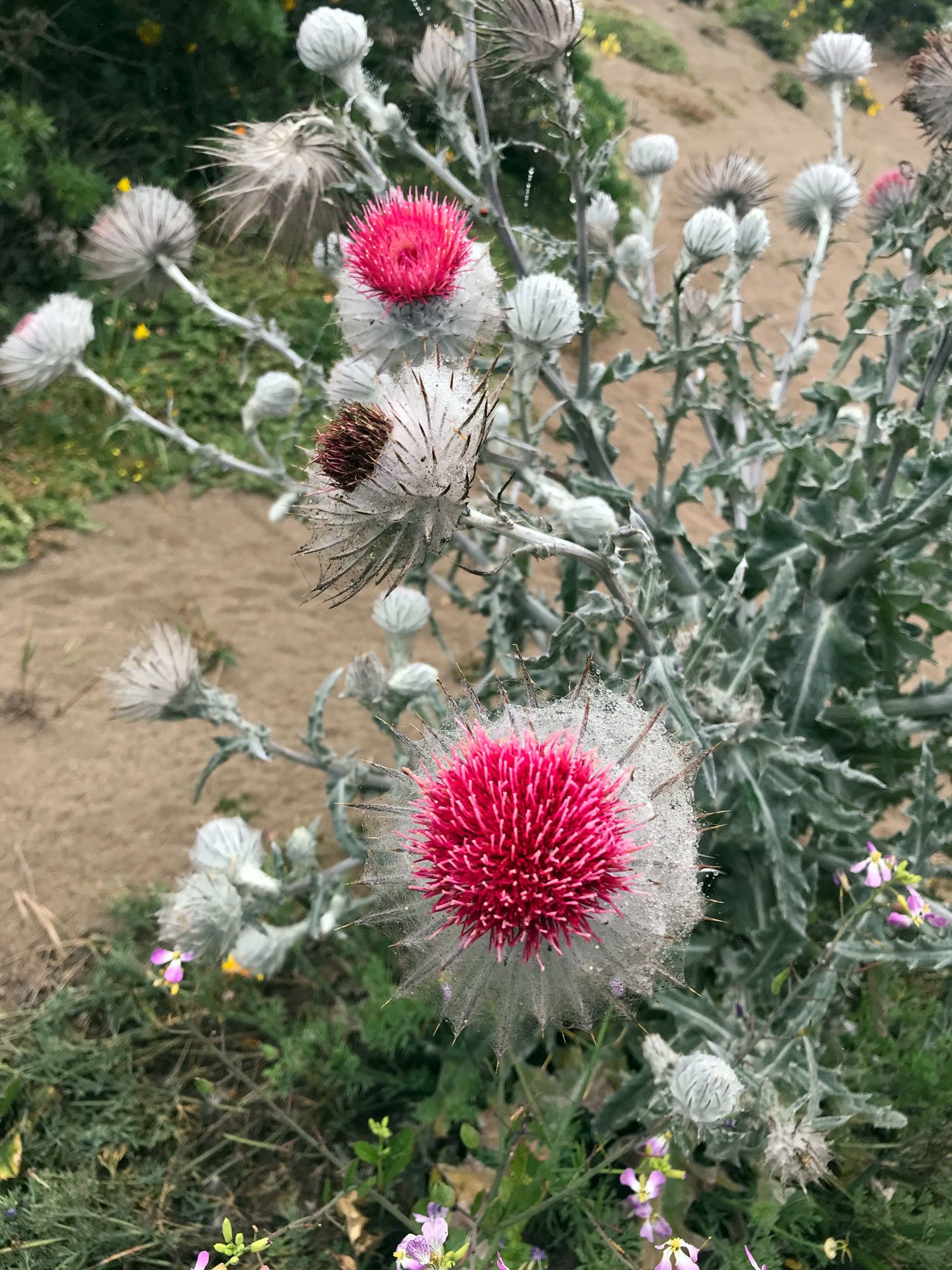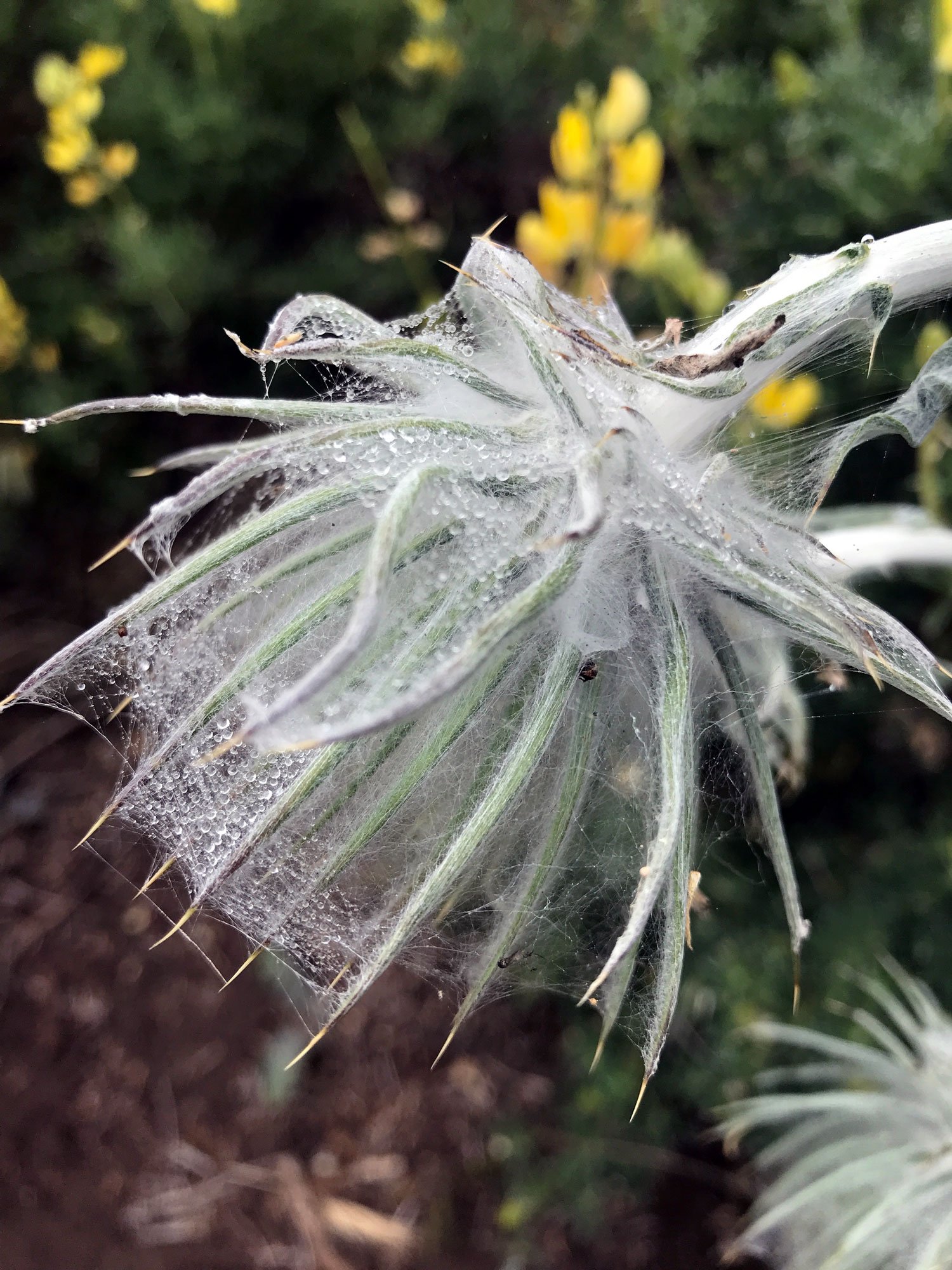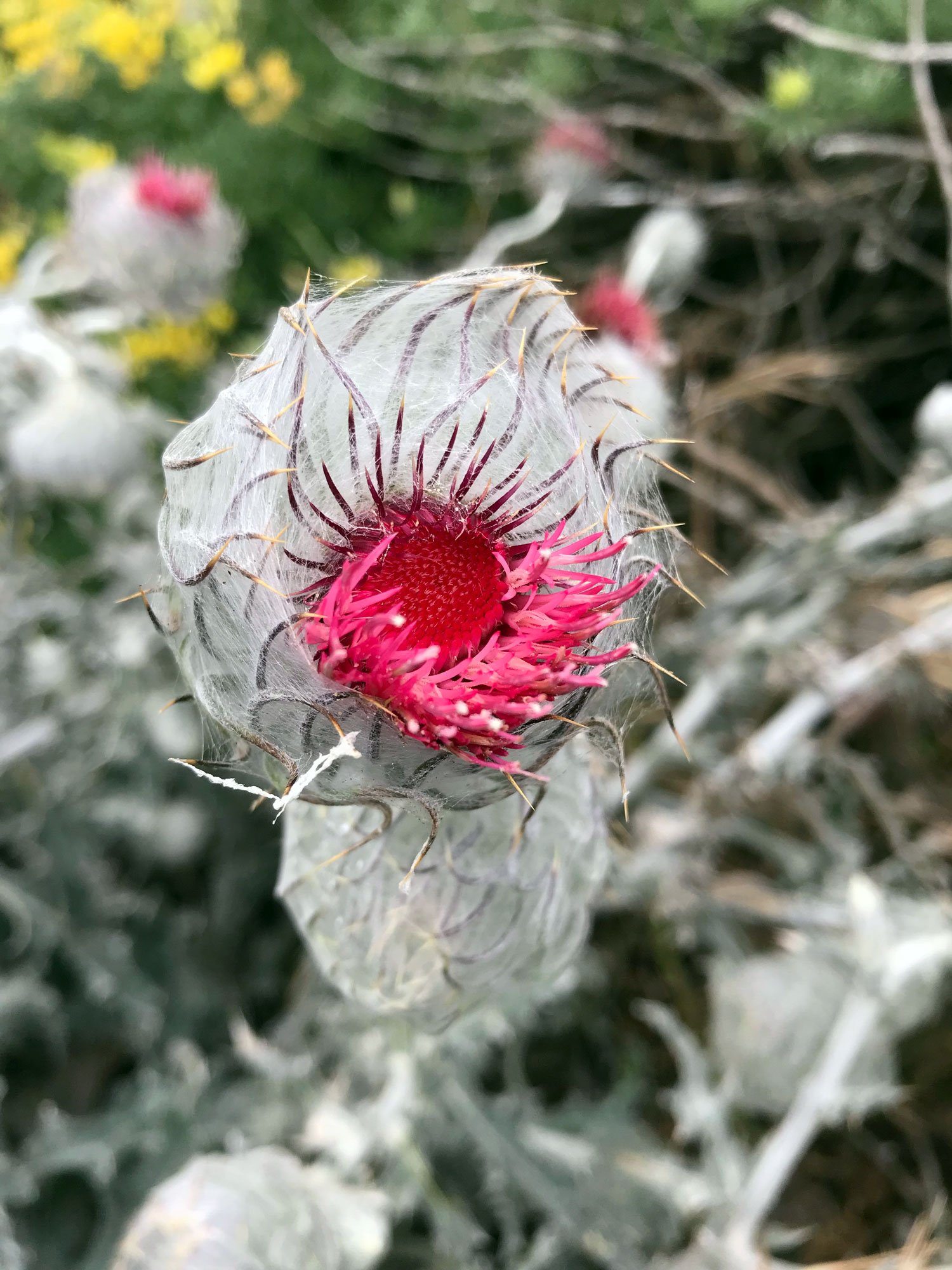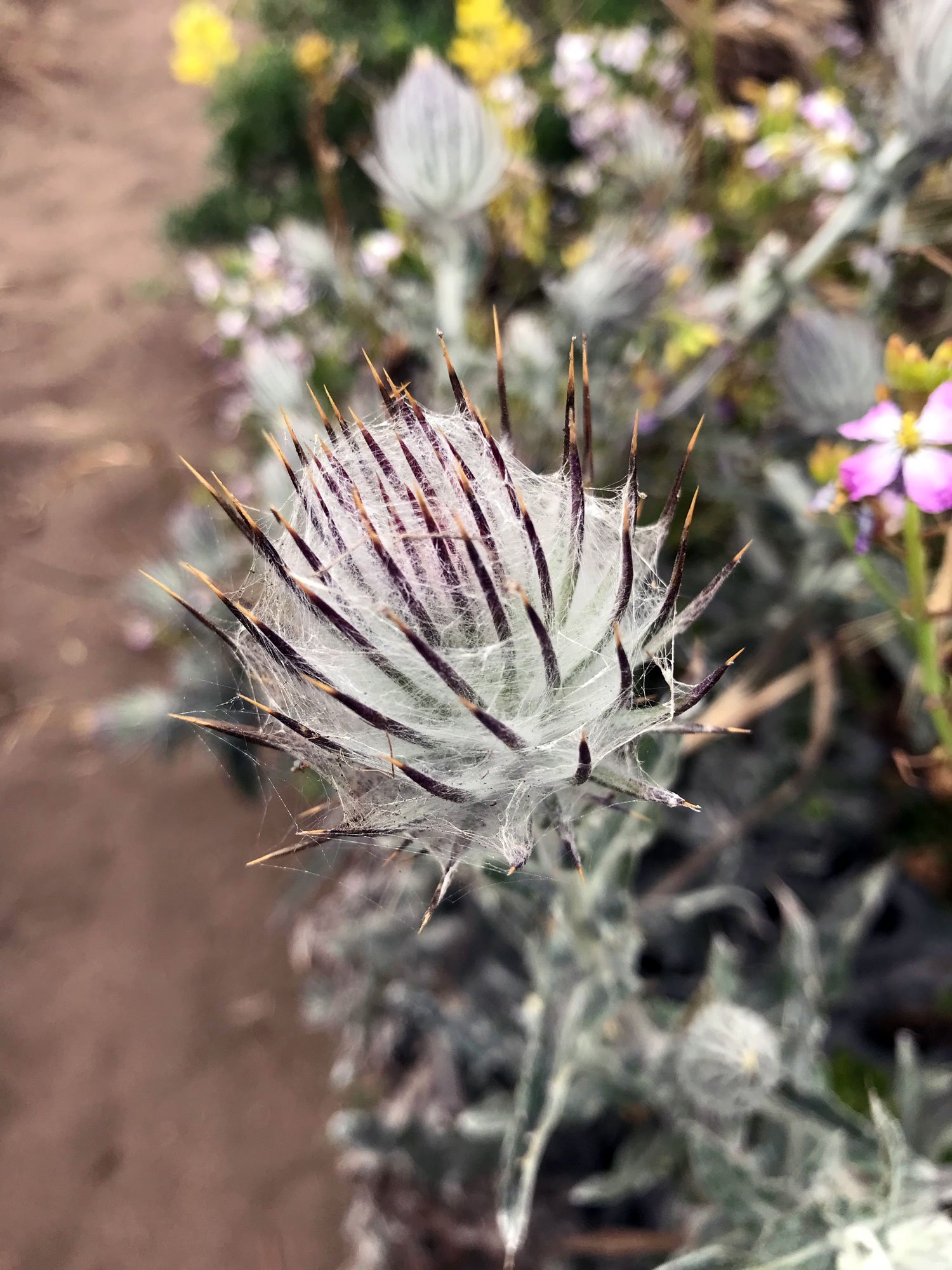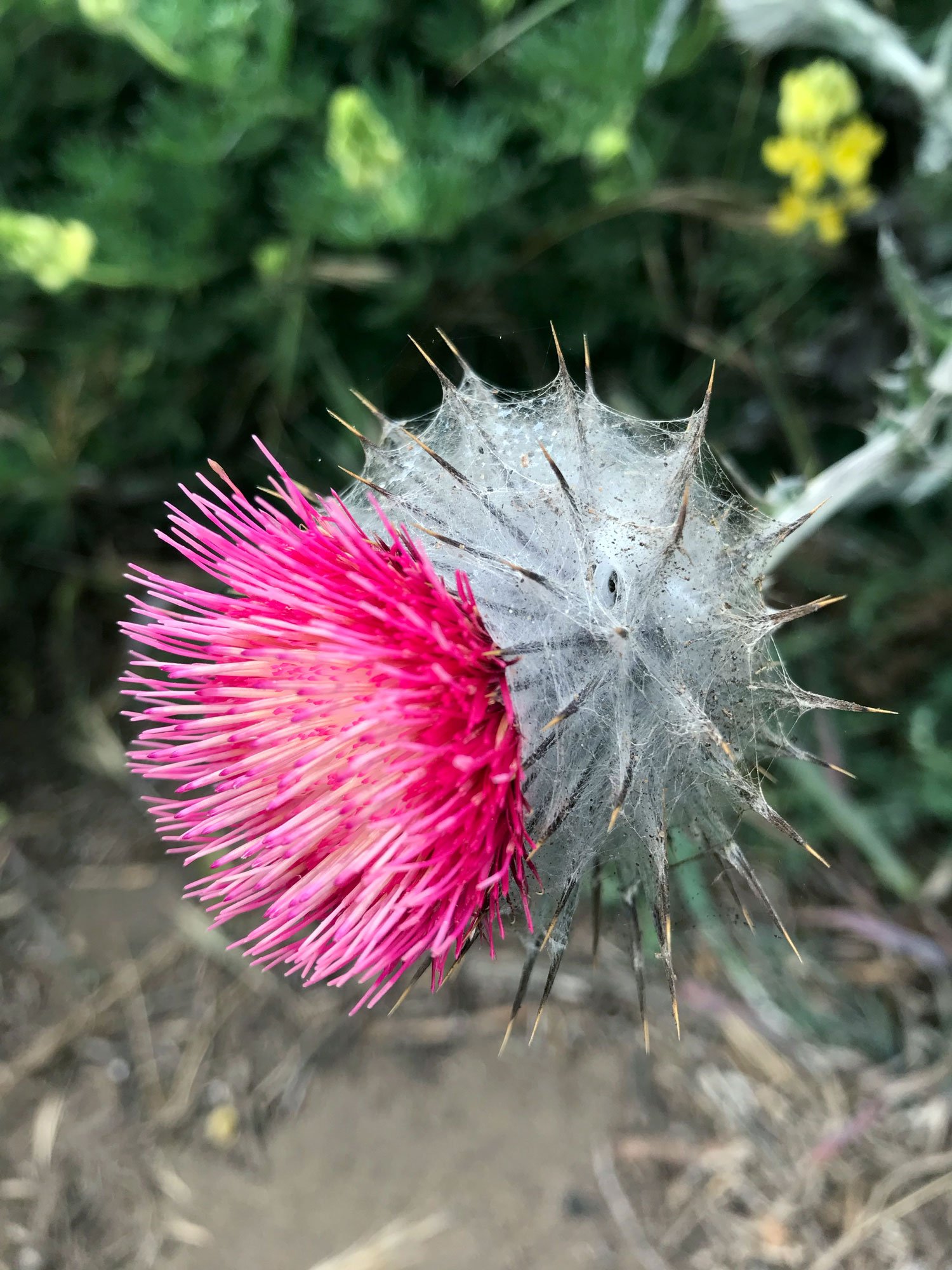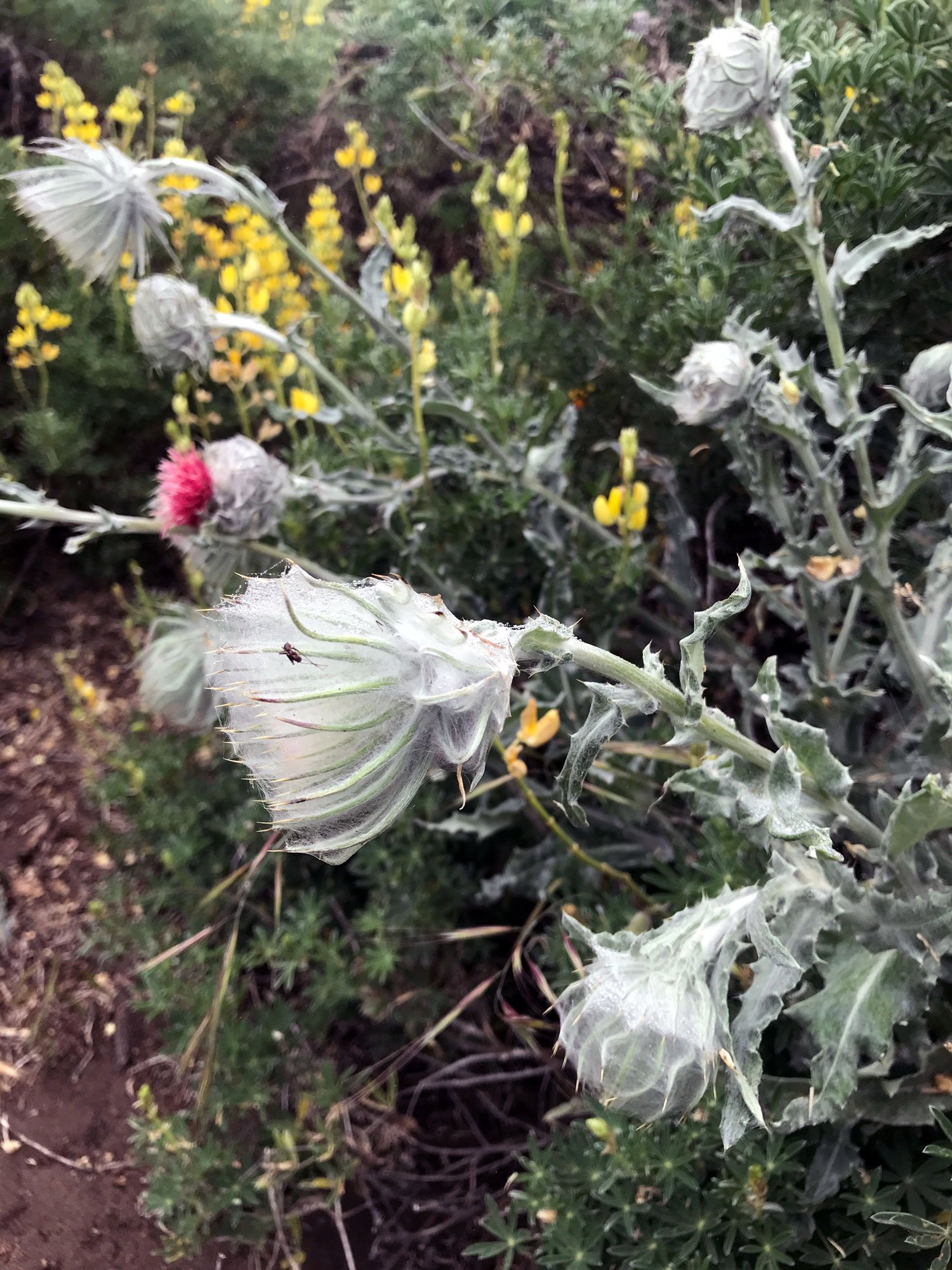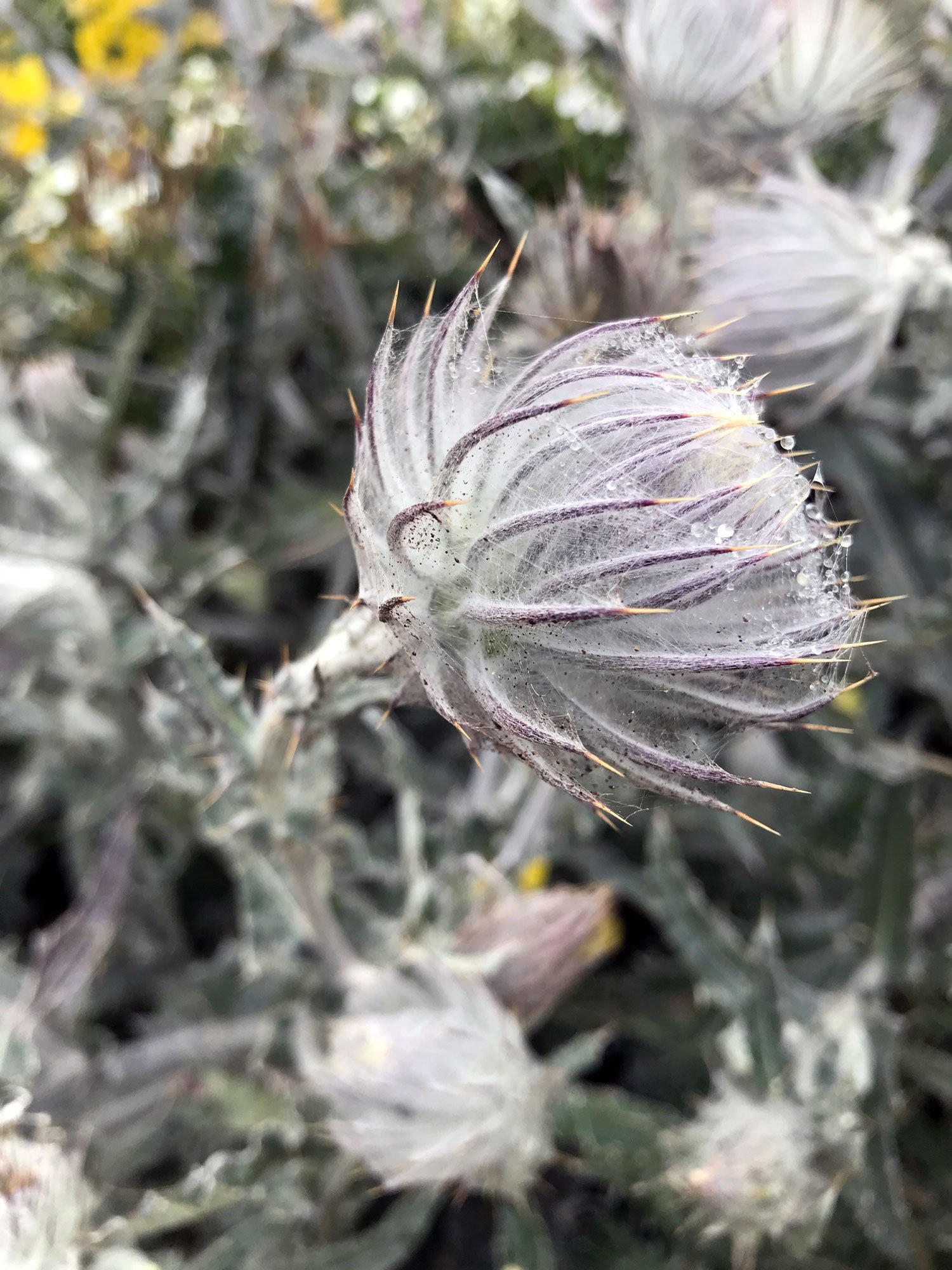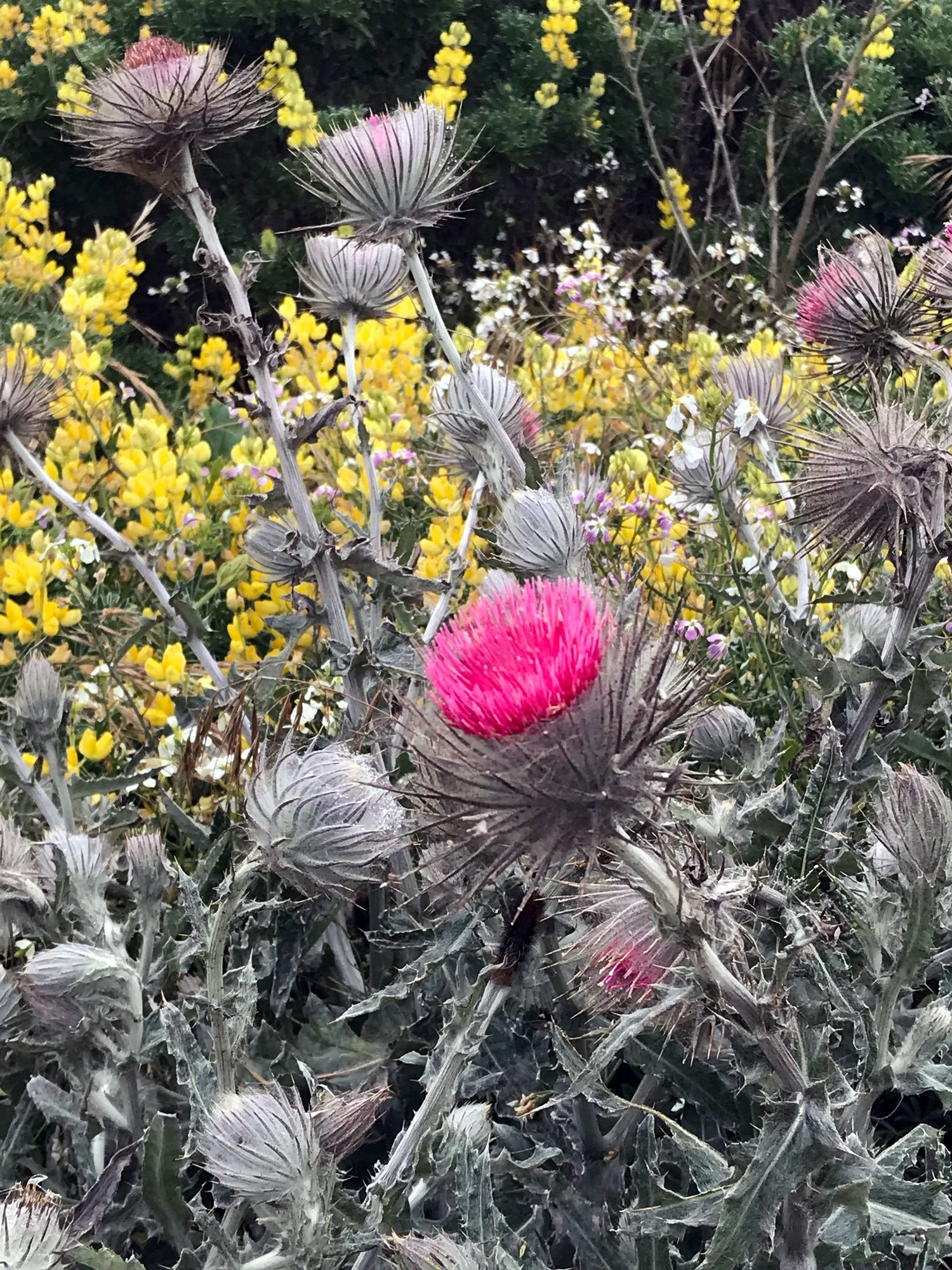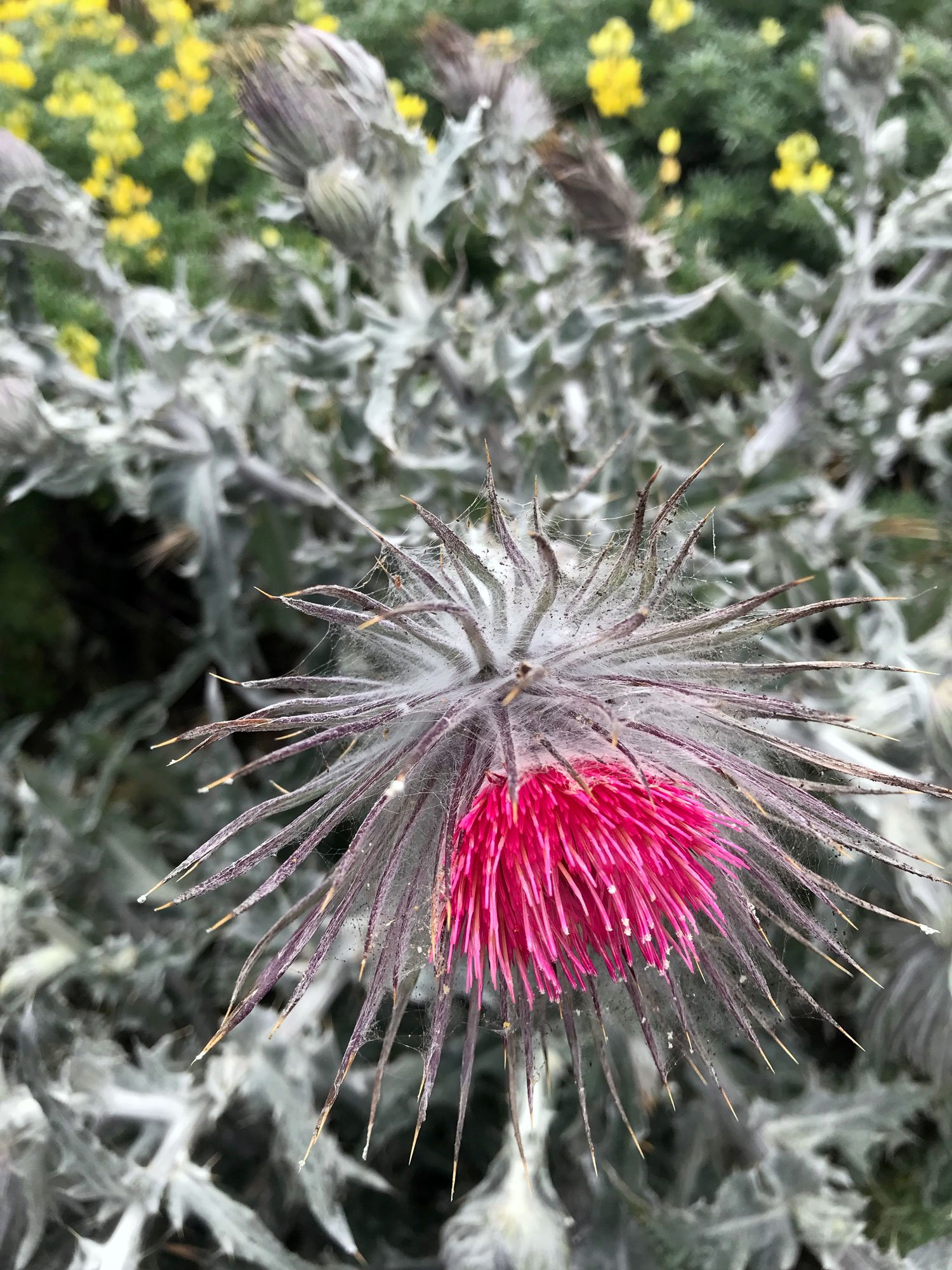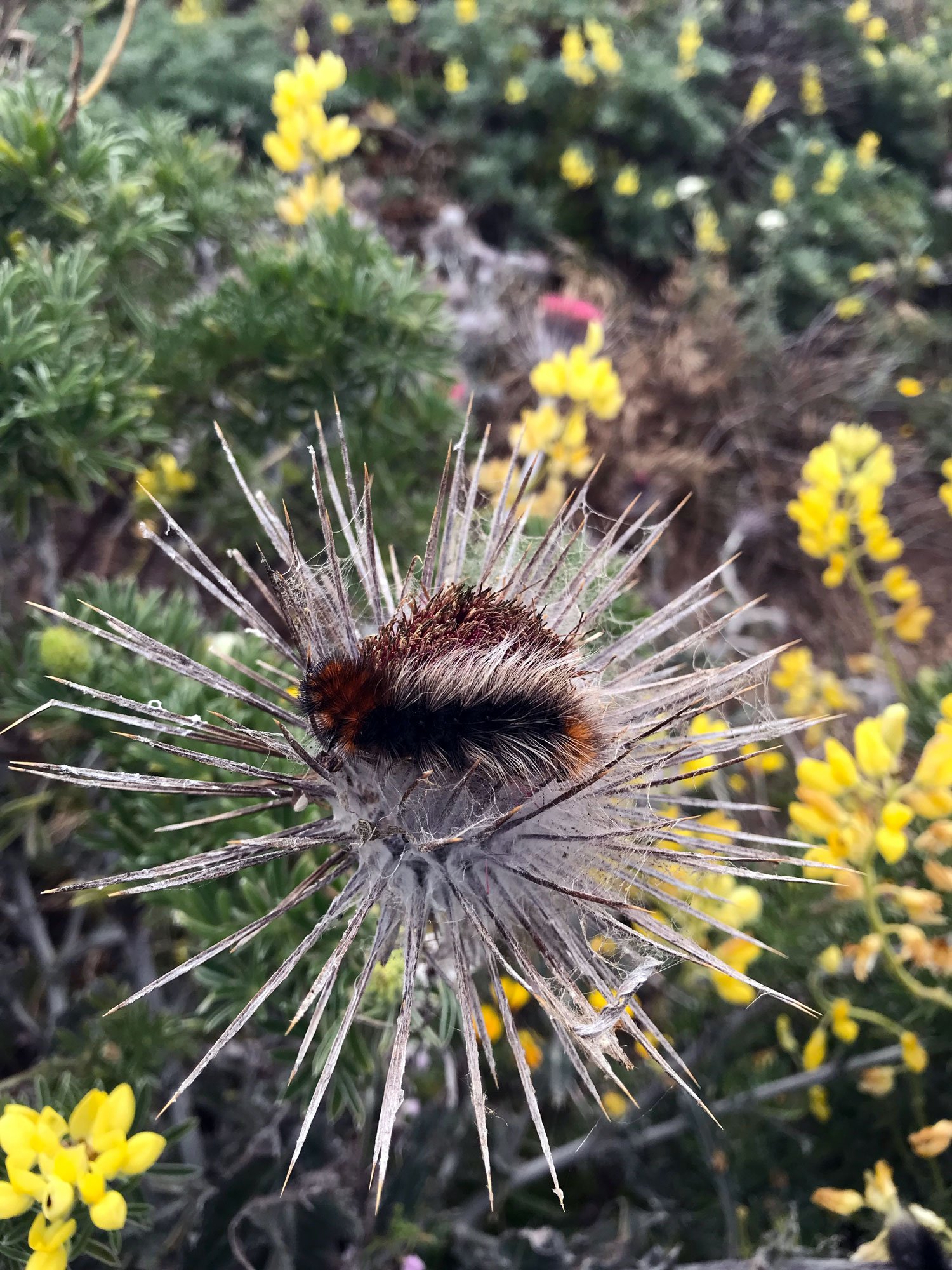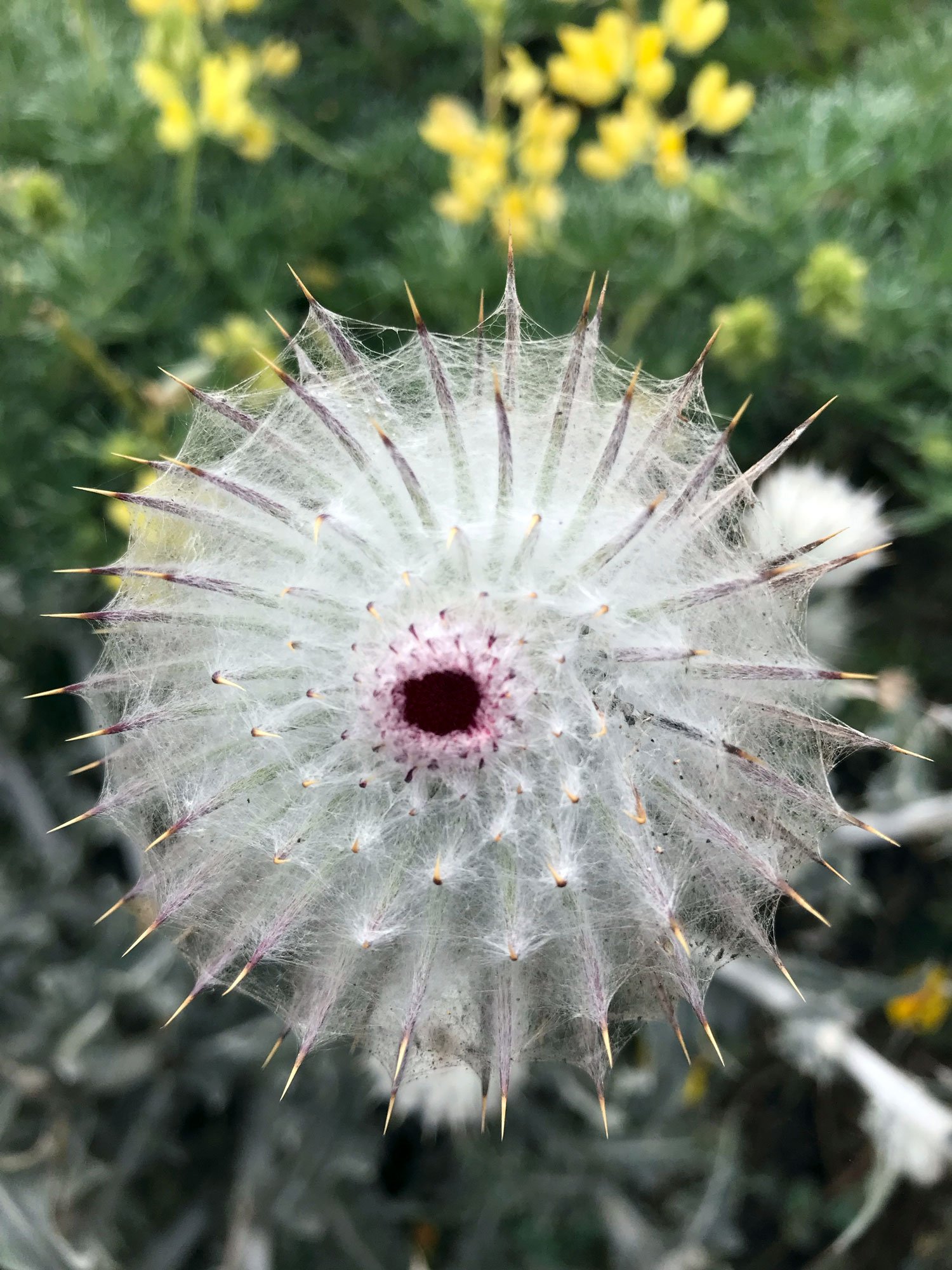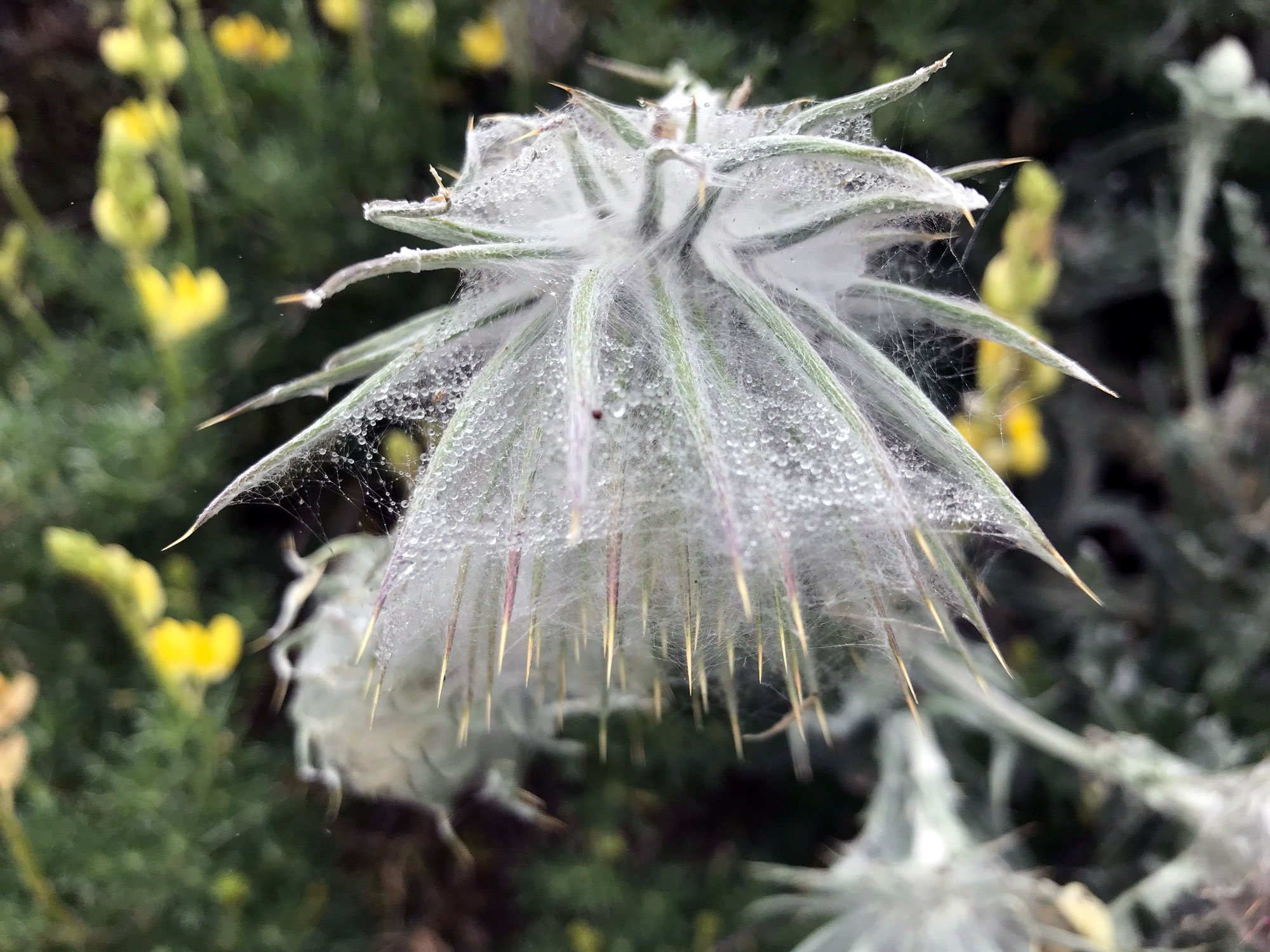A thistle from Mars?
It’s chalky green-gray and covered in sticky webs. Its branches are rangy like tentacles with spiky flower heads bending in all directions. It looks like something from Halloween or a 1950’s sci-fi movie. What is it?
It’s Cirsium occidentale (var. occidentale) commonly known as Cobwebby thistle and, of course, it’s not from Mars — it’s a California native that’s well represented in Point Reyes. You will find it in abundance along the unmaintained portion of the Tomales Point Trail, in the beginning of the Abbotts Lagoon Trail, and dotted elsewhere on the peninsula including coastal bluffs and recently burned areas.
This native is not a menacing weed like the introduced thistle species common throughout the area. Cobwebby thistle is adapted to its ecosystem and does not outcompete other native species. It is a larval host to the California crescent, mylitta crescent, and the painted lady butterfly. On my recent trip to Tomales Point Trail, I spotted a moth caterpillar wrapped carefully around the spines of a cobwebby thistle flower head. (See photo below.) I wonder if it fully realized what plant it had climbed? Ouch, ouch, ouch. Thistle seeds are a food source for birds and the flowers produce abundant nectar which is a favorite of insects including bees and butterflies. Humans used the thistle too. According to the Presidio NPS website, the spring stems were skinned and eaten raw by the Tubatulabal and the Kawaiisu. A tea was made from the roots by the Ohlone and used to treat asthma.
Good things take time. Cobwebby thistle takes 2 years to grow. The first year puts down the tap root and base leaves and in the second year it produces stems and flowers. Cobwebby thistle’s gray-green leaves are covered in white hairs which gives them their ghostly appearance. Each stem holds one or more rounded flower heads. The heads are covered in large spreading spines (officially “prickles”) which are laced in fibers resembling cobwebs. The colorful spiky blooms emerge from the spiny ball in shades ranging from pink and purple to dark red. Flowering happens March through July, peaking in May and June. Birds use the dried thistle down for nests.
The spines of the flower head are particularly stunning — dark purple with yellow tips. The fibrous heads catch the dew and dust and insects. Like something from a fairytale when first opening, prickles are wrapped delicately in a fresh cottony veil. From the center emerges the vibrant thistle flowers.
Every plant is at a different state of development and has its own unique appearance. You will want to explore each one.
The photos below were all taken on the same day, June 3, 2022 along the unmaintained portion of the Tomales Point Trail.
Check out more cobwebby thistle observations in Point Reyes on iNaturalist.
For the insatiably curious, learn the difference between spines, thorns and prickles and read a humorous take here.


